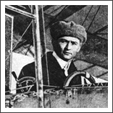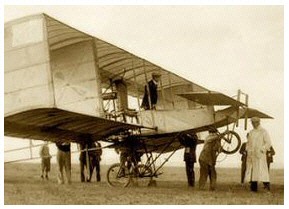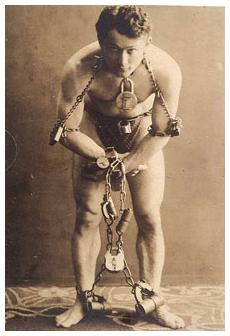Archive for the ‘Articles’ Category
100 Years of Australian Aviation!
Australia’s Centenary of Flight Celebrations
At dawn on 18 March 1910 famous American escapologist Harry Houdini made the first Australian powered, controlled, sustained flight of an aircraft in Australia at Plumpton Dam, Diggers Rest.
Everyone is invited to come along and join in the 100 year anniversary celebrations of this significant date in Australia’s aviation history by taking part in the planned festivities for the 18th, 20th & 21st of March 2010.
The events planned for the celebrations are the result of 18 months of preparation by a large number of individuals and groups from within the Diggers Rest community. The dedication of these people has ensured that there will be a lasting legacy recognising Houdini’s flight and the commemoration of this significant anniversary.
The community of Diggers Rest can be proud of what has been achieved and the town’s significant place in the history of Australian aviation.
The Festival of Flight is proudly brought to you by the Diggers Rest community in partnership with the Melton Shire Council and the Lions Club.
More infomation about the March 2010 Celebrations – Click Here
Houdini – The Aviator
On March 18, 1910, Harry performed the record Australian flight, 2 miles in 3 minutes 37 seconds, in a French Voisin Biplane.
In a lonely paddock at Diggers Rest, barely 20 miles from Melbourne, two men were learning to fly, in the summer of 1910. They were Harry Houdini, world famous for his escapes from handcuffs and bonds of every description, and Ralph C. Banks.
Side by side in the paddock stood two large tents which housed Houdini’s Voisin Biplane, and a “Wright Flyer” piloted by Ralph Banks. It had been imported to Australia and placed in the charge of Mr. Banks
Unsuccessful attempts to take off were made by Houdini on March 17, but on March 18, 1910, the three successful flights were made. Houdini recorded in his diary “never in any fear and never in any danger; it is a wonderful thing”.
Houdini was invited to fly by Taylor’s Aerial League which had decided that on the face of it there was more likelihood of an imported aircraft and pilot making the first flight than a local team.
Houdini was actually here on a theatrical tour, but he would not have brought his French built Voisin bi-plane with him without this invitation. He also brought his own mechanic, a Frenchman named Brassac. The aircraft, and mechanic, were sent up to Diggers Rest, near Melbourne, and housed in a tent. In a few words, the Voisin was really a development of the boxkite and as such owed a great deal to Hargrave.
At the time the French Government were employing boxkites of the very same type as that used by Hargrave for artillery-spotting and reconnaissance. Houdini was aware of this. He invited Hargrave to attend his first flight, but the Australian refused, replying with an acerbity foreign to his character, that he had invented this type of aeroplane many years before.
Houdini made a number of flights at Diggers Rest on the 21st, for 7 minutes and 37 seconds.
He made other flights at Rosehill during his appearance in Sydney music halls.
The curious thing is that when he left Australia he gave up flying. He sold the Voisin and never flew again, nor did he ever drive a car again.
Nobody has ever given adequate reasons for the change.
[adrotate group=”1″]
Houdini – The Escapologist
Houdini was, of course, a national figure in Australia. His theatrical appearances packed every house in which he performed.
On stage, Houdini’s message of escape and triumph over great odds was embraced by his audience. He became a household name by escaping from handcuffs, locked steel boxes, bank safes, nailed crates, prison cells and sealed water chambers.
He freed himself from a strait-jacket in a number of minutes after he was hung upside down from a tall New York building.
In Melbourne (February 17th 1909) he jumped from Queens Bridge into the much aligned, but seldom transparent, waters of the Yarra River, manacled, and yet freed himself within a few minutes, but was unnerved when he surfaced as a corpse was floating next to him.
Houdini was a showman of the first ilk, and he had no false modesty about his achievements as a performer. His aviation he regarded strictly as a hobby he was an amateur pilot, regardless of his skill. He was never known to brag of his flying.
When Houdini arrived at the Garrick Theatre in Detroit, Michigan, on October 24, 1926, for what would be his last performance, he had a fever of 104°F (40°C).
Despite a diagnosis of acute appendicitis, Houdini took to the stage. He was reported to have passed out during the show, but was revived and continued. Afterwards, he was hospitalized at Detroit’s Grace Hospital where he died of peritonitis from a ruptured appendix at 1:26 p.m. in Room 401 on October 31 (Halloween), 1926, at the age of 52.